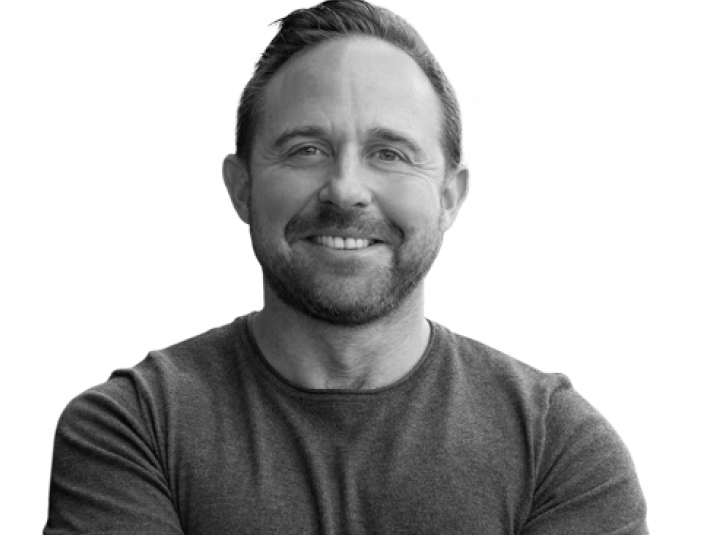“Sometimes we’ve got to put our own oxygen mask on first. We need to put ourselves ahead if we are to inspire, empower and enable the people around us to be the best they can be”, said Sherilyn Shackell, founder and global CEO at The Marketing Academy, as she introduced Sean Hall, CEO at Energx and speaker at Grace Blue’s most recent Lesson in Leadership.
In this session, Sean Hall teaches us simple strategies to become self-aware of the symptoms which could lead to burnout, to become more present and boost our energy. He takes the view from the leaders’ perspective to help senior executives have a plan in place to ensure mental health is on the agenda of every great leader.
An energy crisis
Research by Energx among thousands of people within global organisations reveals that on average women feel they have enough energy only 49% of the time, and men 53% of the time.
The events of the last few years have taken a toll on many people, on energy levels and mental health. Many are feeling depleted and tired and are at risk or already suffering burnout. With the risk of health problems and loss of productivity and innovation it’s now more important than ever to understand the warning signs of burnout to prevent or recover.
Why are we lacking energy?
Sean identifies 13 “energy vampires” that negatively impact our energy levels. These are:
- Sleep deprivation
- Negative self-talk
- Physical inactivity
- Lack of opportunity to use our strength
- Lack of balance
- Lack of clarity
- Stress and feeling of overwhelm
- Lack of purpose
- Lack of energy for relationships
- Poor nutrition
- Negative moods
- Lack of passion for work
- Loneliness at work
According to a study by Energx, 75% of women are experiencing four or more energy vampires simultaneously. They are at higher risk of burnout and often take on more responsibility with a family setting. Men are not far behind with 66% experiencing four or more “energy vampires” concurrently.
Overcoming energy vampires
It all starts with making the decision to take responsibility and ensure the “vampires” don’t suck our energy levels. Here are some simple strategies to adopt:
- Square breathing: Use this breathing technique anytime you feel overwhelmed, stressed, a little bit anxious or worried. Take a deep breath in for four seconds, hold for four seconds and exhale for four seconds. Do this for about 90 seconds to calm yourself down or when you feel distracted and need to be more present. If followed correctly, it helps activate your parasympathetic nervous system and acquire energy.
- Boost dopamine:this feel-good hormone gets depleted in times of uncertainty. To help boost it we need to focus on things that we can control:
- Take responsibility for your energy, e.g. sleep well, stay hydrated, eat heathy, stop comparing ourselves with others or stop your inner critic;
- Take responsibility for your energy impact on others: how do you want people to feel after they have spent time with you? Boost the collective energy of your environment;
- Take responsibility for how well you are at what you do, i.e. be a master of your craft and be proud of what you produce every day.
- Curiosity:stay curious! Curiosity helps you be in the moment and is one of the superpowers as it’s highly correlated to overall wellbeing.
If we choose to be “energists”, we can expand our own energy and that of the people around us.
What does this mean for a leader?
Let’s establish first that if you have influence, you are a leader; it’s not about the position or title. Leadership success is determined by the collective energy of your team. The most powerful resource in any organisation is the collective energy and creativity of your people.
Great leaders are those who leave people better than they found them. Sean identifies four areas in which leaders can make a difference to their teams by improving their:
– Mental health
– Creativity and innovation
– Level of EQ and inclusivity
– Higher productivity
How to lift the collective energy of a team?
To lift the collective energy of your team, you need high levels of energy yourself. Leaders can choose whether to be “energy vampires” or “energists”.
In addition, it is important to have a strategy in place to lift the energy levels and avoid burnout at work, while respecting that some people may not want to talk about their mental health. Hence Sean recommends moving the conversation from mental health to energy, where energy is the antidote.
The use of artificial intelligence, for example through an app like Franky (AI Coaching) can help organisations make the conversation about mental health more accessible and boost their employees levels of energy.
Leadership checkpoints
– Does your leadership strategy include an anti-burnout strategy?
– Is your approach inclusive and personalised?
– Are you showing your people you care about them?
– Are you prioritising mental health and an anti-burnout strategy?
To learn more and view the full Lesson in Leadership,
- Contact Sean Hall at sean@energx.com.au or +61 406 330 130
- View the video here.
